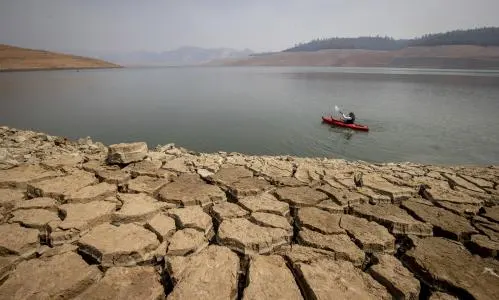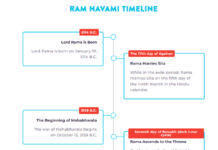Vidya Sethuraman
India Post News Service
State officials are preparing for water shortages this summer. California Gov. Gavin Newsom issued an executive order on 26 April, calling on local water agencies to implement their conservation plans and urging residents to self-monitor water use. California’s snowpack is now at 39 percent of its average, signaling a deepening of the drought, which is already the worst in the western United States in 1,200 years. Speakers at the EMS Briefing this week discussed the impact of climate change on the drought, conservation efforts undertaken by the state, the $1 billion hit to California’s agricultural industry, and how other countries are managing their own water crises.
Sean de Guzman, PE, MS, Manager of the Snow Surveys and Water Supply Forecasting Unit at the California Department of Water Resources, discussed diminishing snowpack levels, a key determinant of California’s drought. He pointed out that snow cover in California has continued to decline for the past 70 years. Snow cover is important to California’s water supply, as 30 percent of water comes from alpine snow-covered areas. Looking at the national peak snowpack table on April 1 each year, five of California’s lowest snowpack years have occurred in the last 15 years, and 2022 is the fifth-lowest snowpack year in California history.
Dr. Josue Medellin-Azuara, a professor at the School of Engineering at UC Merced, said that he lives in California’s Central Valley agricultural region and has witnessed the climate change of extreme drought and extreme humidity in California in the past few decades. Precipitation was above average in more than half of the years and below average in nearly half, but temperatures have risen in the last decade and have become the new normal.
Some traditionally wet areas of California that can provide water for agriculture have been quite dry. He pointed out that because of the warming climate, California’s cash crops are probably short of more than 5 million units of water, so the groundwater must be further developed. The demand for agricultural water will continue to increase. California’s agriculture can always find a way to meet the challenges, ensuring that there is no need to worry about food, and the challenges of water supply shortage to crops.
Karina Herrera, an environmental scientist at WCRB discussed the state’s conservation efforts and the impact of climate change. California takes both a short-term and a long-term approach. The short-term includes executive orders, such as allowing people to voluntarily reduce water consumption by 15%, use water-saving appliances, change water-saving plants, etc., while the California Water Commission also promotes statewide commercial, industrial and urban water conservation; long-term plans, it is to promote Conserving water is a way of life for Californians.
James Nachbaur, California State Water Board said the new rules pertain to wasteful outdoor water use. “These range from things like washing impervious surfaces with water when you could use a broom,” he says. “It also prohibits wasteful uses like irrigating your lawn during a rainstorm or immediately before or after it’s raining.”
Using water wisely is crucial.
Here are some water-saving tips:
- Fix leaky plumbing
- Install high-efficiency toilets
- Install aerators on faucets
- Install water-efficient showerheads







